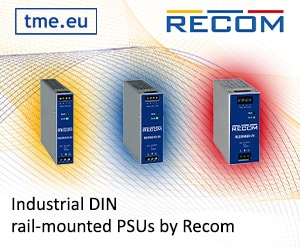IoT, cognitive manufacturing, and connected systems – they all have one thing in common which is that they all work on data that has been collected. The cognitive tools start to analyse all of the things that have been brought in. How does it work

Q. With the advent of sensors, we have all read how businesses have had an explosion of data. Their challenge was obviously to get business insights out of it, but where do they start?
A. It starts with changing operational business processes to identify the specific data that is really important. The data, such as how a customer uses a specific product or service, can be captured by sensors and then used as input for future development cycles. Traditional electronics manufacturing and consumer electronics companies never thought of their business that way. They made things and shipped it, and then never needed to hear from the customer again. Today everyone is constantly connected to their devices and products. The first step for businesses is to aggregate their collected data and start looking for patterns instead of just jumping into non-measurable programs as they previously used to. Cognitive tools come heavily into play here.
Q.Could you give an example of a cognitive machine learning to use natural language?
A.When IBM Watson played Jeopardy, the early versions were only getting just half of the questions right. It later managed to dramatically improve with almost no training on the data. How? The learning aspect is critical. Human beings, as experts, came in to help this cognitive system understand the taxonomy of the problem being worked on.
Q.Could you explain the role that taxonomy plays here?
A.The literal and logical meaning of words is understood by the cognitive system after it builds a lot of context to understand domain knowledge. This is very natural for a human being, but not so much to a computer. Engineers need to realise that with cognitive, half the problem is about capturing the right data while the other half is about training the system using acquired domain knowledge. Engineers use that corpus of data to interrogate the system using natural language.
Q.Coming back to our electronics industry, where do blockchains fall in the world of connected devices?
A.The Electronics industry is very complex and multi-layered. For example, if you break open any electronic device you will find at least five to fifteen companies involved in it. The companies that interact with each other are sending transactions back and forth. If minor problems occur, companies often need to spend millions of dollars to resolve the supply chain issues. Blockchain essentially creates a trusted environment to operate on multi-company supply chain ecosystems. This produces business value as the blockchain helps eliminate friction in the system that can occur due to a lack of trust, especially when you consider the huge amount of verification and agents involved with transactions flying back and forth. Blockchain becomes an underpinning of how secure and trusted business transactions can be done.
Q.Are blockchains all about evolving into an automated, secure methodology of handling business transactions?
A.In certain cases, automation of tasks can be used to eliminate manual pieces. In the most extreme cases, automation can eliminate human tasks itself. If you think about automation using blockchain, the tasks could be done intelligently. Blockchain may act as a ledger between the two companies where data from a variety of sources need to be retrieved even for something as simple as payment processing. Now, all these tasks could be supported in a blockchain application. In some cases, human beings are still going to be involved for setting up the blockchain system and to make appropriate approvals and verifications. Do not forget that there are other technologies that are merged on top of a blockchain. Blockchain gives you that repository or the sub ledger that people can see and trust.
Q.How does COGNITIVE TECHNOLOGY merge with blockchain and how deep it goes working hand in hand?
A. Putting cognitive analytics on top of a blockchain provides the capability to look for emerging patterns and trends. There are opportunities to detect fraud, discrepancies and root cause analysis to create a trusted source of data that form the core of business processes. Cognitive analytics and blockchain are not really tightly mixed. Cognitive analytics is about studying patterns from data that has been “vetted” by the blockchain. More importantly, the data in the blockchain ledger can be structured or unstructured, requiring cognitive technology for analysis. The source of information could come from a manufacturing sector, a traditional business system, or a variety of other areas.
Q.What are the differences in the way these two technologies look at data?
A.Blockchain looks at a massive amount of fairly organised information. The cognitive layer tries to understand the data layer formed by the blockchain and it builds the indices that are necessary to answer questions in natural language. This is the way cognitive systems understand, reason, and learn. Now, with data in the blockchain from many other data sources, applications can be built on top to literally interrogate the system using natural language, just like how people talk to each other.
Q.How does Cognitive analytics work under the hood?
A.Watson’s cognitive analytics help in gathering a range of potential answers from questions that are being raised. The hypothesis Watson forms allows it to come back with a set of answers and give a confidence level for that answer. A person can look at the set of answers and select the one to pursue. Under the hood of Watson, a lot of evidence is used to come up with the confidence level. Since it learns as it goes, it not only avoids the recursively searching through thousands of documents that a search engine would do. It also shows how the argument has been built and supported.
Q.What opportunities lie ahead in these technologies for consumer electronics?
A.Let us start with products that people use. All the products need service at some point and if you count the number, there would be supporting hundreds of thousands of products. Each product may have a manual that is thicker than your average book. If a problem arises with the product, instead of going to the manual, the cognitive system empowers the service person to interrogate the data and pin point to the exact cause and solution to the problem. The more questions that the system encounters, the more it would come back with appropriate answers, gaining knowledge and confidence through the learning experience. It’s kind of like how IBM Watson worked on Jeopardy.
Q.Could you talk to us about Cognitive manufacturing?
A.This is a relatively a new concept, but if we think about it, there is a ton of data to deal with in manufacturing processes to optimize production schedules, costs, and quality. On the one hand, massive production facilities must run efficiently and profitably, while on the other hand, customers are waiting… and time is running out. To detect patterns coming from the sensor data, such as wear and tear in the manufacturing equipment, the solution comes from understanding the data and recommending how to solve the issues. It is all about knowing these facts and analysing the data to fix problems faster, while ensuring optimal machine uptime, quality, and efficiency. We will be seeing more cognitive technology relevant to cognitive applications that will be relevant to manufacturing.
Q.What is the future of cognitive technology, blockchain and IoT in a Nutshell?
A.With sensors as the authors, the Internet of Things is essentially about bringing the sensor data to a place where it could be useful. Cognitive applications are given an unbelievable amount of data to study when we intersect it with IoT. When you look at that and ask what is possible, I would say, what is not possible! The future includes making sense of all that data to gain new insights that can be used to revamp product development and operations, resulting in brand new experiences for consumers and huge financial benefits to businesses.














